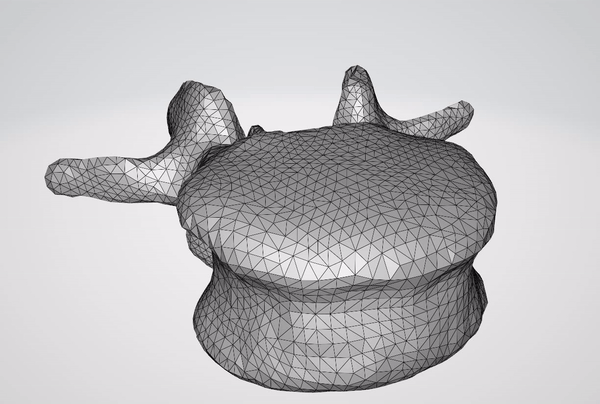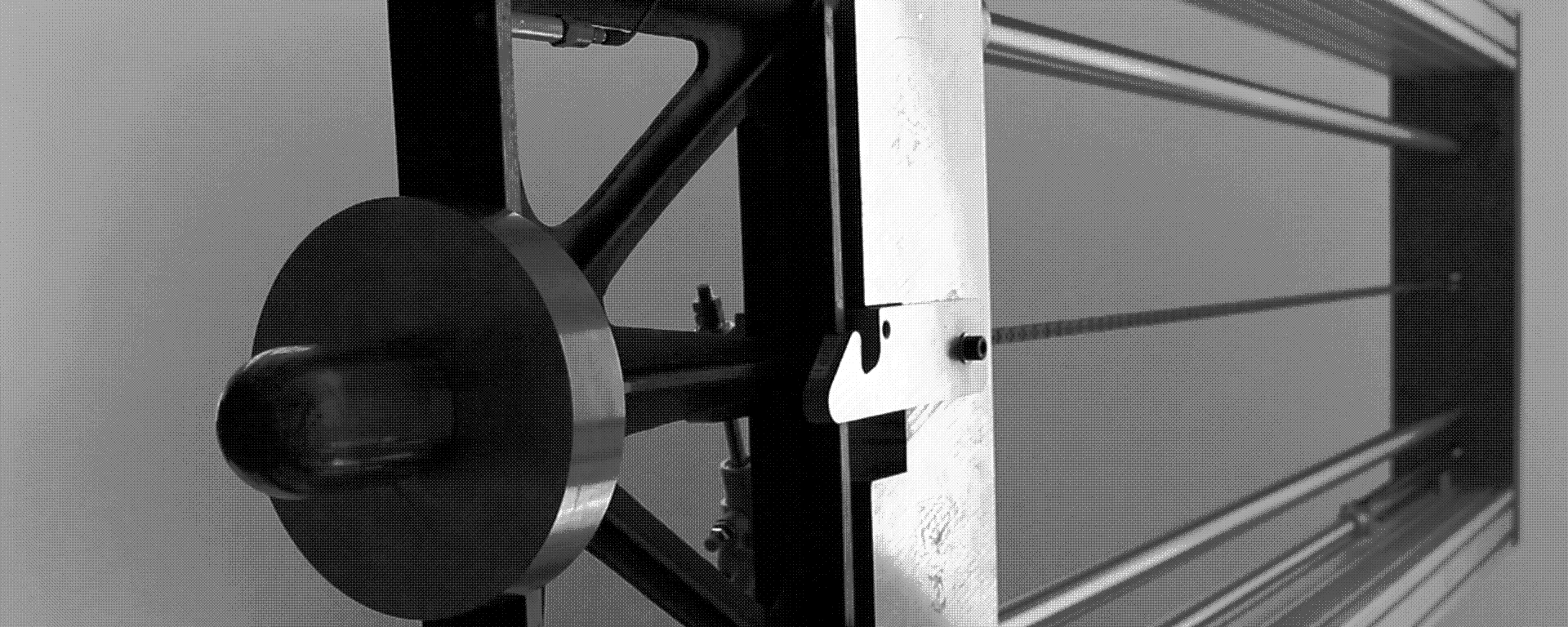
CASE STUDY
Optimised Motor Housing Design
#FEA #CFD #Stress #Thermostructural #Additive Manufacturing
Our client from the additive manufacturing industry approached us to assist in the design of a motor housing and consult on the use of an appropriate aluminium alloy and lattice structures to improve its structural and heat dissipating performance and at the same time minimise its weight.
We performed several analyses using non-linear static FEA to decide on an appropriate aluminium alloy that should be selected. After analysing the results and highlighting the highly stressed regions, we consulted on several potential lattice structure designs and topology optimisation techniques that should be employed, taking into consideration manufacturing limitations and cost requirements.
In collaboration with our client, we selected three different variations and assessed them using non-linear static FEA and CFD to determine the most efficient design.
The final design reduced the weight of the housing by 40%, without compromising its structural integrity and achieved a peak temperature reduction while in normal operation of 20%.



CASE STUDY
Assessment of an Innovative Power Transmission System
#FEA #MBD #CAD #StressAnalysis #PerformanceEvaluation #DesignIterations #Automotive
Our client from the automotive industry approached us to assist in the evaluation of an innovative, patented design of a chain drive primarily for bikes and motorcycles. Although they had developed a promising and potentially disruptive novel design of a chain, they were finding difficult to assess its performance and compare it to current market competitors.
We recommended an evaluation protocol that initially involved some simplified 2D FEA analyses to assess the structural performance of the assembly, estimate fatigue life and quickly go through design iterations and finalise the first design that would be prototype.
At a second stage, we developed further the evaluation protocol to include advanced non-linear dynamic 3D FEA and MBD analyses to evaluate wear of all components, fatigue life and power transmission efficiency. We also used the same protocol to assess existing designs and key competitors.
Through this close collaboration that lasted for almost a year, our client improved their design, validated their technology's superior performance, increased the number of potential applications, and moved faster towards commercialisation.



CASE STUDY
Design of a Shielding Device for Space Satellites
#FEA #CAD #StressAnalysis #Modal #Thermal #DesignOptimisation #AirSpace
Our client from the aerospace industry, as part of their mission to deflect ionising radiation from satellite components, required assistance in the design of a prototype shield enclosure that would incorporate their novel protective technology.
We designed a prototype for experimental testing based on the client's requirements and after reviewing relevant regulations and standards. In contact with space launcher stations, we derive a loading envelope and developed an assessment methodology using FEA. Starting from the prototype design, we performed several sets of analysis to determine the final optimised design of the device. In particular, we performed thermo-structural, modal, harmonic, random vibration analyses to rapidly increase the technical readiness level of the technology.
Our work provided the client with a complete design to implement their technology safely and with confidence on satellite components that would be launched into space, aiding their goal to increase the effectiveness and reliability of radiation damage mitigation technologies.



CASE STUDY
Design of the Suspension System for Lightweight Vehicles
#CAD #DesignOptimisation #DrawingsForManufacture #Automotive
Our client from the automotive industry required assistance in the optimisation of their suspension designs used and retrofitted in a series of lightweight vehicles, including that of an off-road buggy. The aim was to modify their current products and make them modular so that they can be selected and easily sent out for manufacturing.
We prepared a database of modular components, stored them in a design database and modified all products and assemblies to use modular common parts as often as possible. We developed parametric CAD designs and streamlined the client's product data management process to facilitate future product development and ensure that the modular components can be easily used in cases the suspension system is retrofitted to existing vehicles.



CASE STUDY
Root Cause Analysis of Failures During the Swaging of Metal Seals into Flexible Pipes
#FEA #Failure #Thermostructural #NonLinearlyViscoElasticity #Polymers #Oil&Gas

Our client from the oil and gas industry approached us to investigate failures occurring during or after their swaging manufacturing process, a process used to incorporate metal seals to the main body of flexible pipes by applying a compressive force. It is essential for the quality of the final product that this seal can withstand the lifecycle of the pipe.
We simulated the swaging process and the expected following thermal cycles by developing and using an advanced non-linearly viscoelastic axisymmetric FE model and applying multiple thermal creep load cases. The models were also further developed to investigate the effects of different manufacturing variables and determine an optimal range.
Our findings helped the client to optimise their swaging manufacturing process, mitigate failures, and reduce their research and development and quality control costs by eliminating the need to perform expensive testing requiring to stop production.


CASE STUDY
Material Behaviour of Various Lattice Structures
#FEA #Testing #HighRate #Stress #AdditiveManufacturing
Our client from the additive manufacturing industry approached us to assist in the development of an advanced material properties library of various lattice structures of different shapes and patterns aiming to facilitate the material selection process for potential applications and clients.
By incorporating lattice structures into the design of a component or assembly allows to overcome complex engineering challenges in a structurally effective way.
We designed and performed a series of experiments including low and high rate compression, tension, 3p and 4p bending, torsion and drop tests to determine the behaviour of various samples, including stress-strain curves, non-linear rate dependency, yield and ultimate strength, modulus of elasticity, shear modulus etc.
We also simulated these tests using FE models and our bespoke inverse FE modelling algorithm to derive bulk material properties of each lattice shape and facilitate future modelling studies.




CASE STUDY
Evaluation of a Blast Mitigation System
#Testing #HighRate #Blast #BlastMitigation #Defence
Our client from the defence industry approached us to assist in a series of real scale tests to evaluate a novel active blast protection system to be incorporated in vehicles and counteract antivehicular attacks due to landmines.
Using our testing equipment, including a moveable high-rate data acquisition system and several high rate sensors, we placed accelerometers and LVDTs on the floor of the vehicle and used to record the acceleration, velocity, and displacement of the vehicle which was exposed to a realistic blast loading scenario at Radnor Range with and without the client's protective mechanism. We also correctly positioned and instrumented an Anthropometric Testing Device.
Our findings from the analysis of the recorded data provided evidence that the counteracting system reduced the impact of the blast to non-injurious levels.



CASE STUDY
Development of a Spinal Nucleus Replacement Device
#MaterialTesting #MedTech #Implants
Our clients from the medical device industry face important R&D challenges early on. Specifically, our client developing implant designs approached us with several considerations, one of them being the material behaviour of the final product. Does it withstand physiological loading? Can it imitate the native tissue? Will it last?
Through our access to the Spinal Implant Test Suite at Imperial College London we performed a series of material tests to characterise different hydrogel formulations as possible replacements for the spinal nucleus pulposus.


CASE STUDY
Design of a a Drag-Type Water Turbine
#CFD #DesignOptimisatoin #WaterTreatment
Our client from the water treatment industry approached us to assist in the optimisation of the design of a novel spherical turbine system to be installed within a pipe to both regulate pressure spikes of the pipework and generate hydropower.
We have developed a model of the turbine and analysed it using CFD for various different states of the system to determine the efficiency of the system. Based on the findings, we recommended and assessed modifications to improve the system's performance, and suggested locations of installation in the current system of the water treatment plant.
Our work has allowed the client to manufacture and trial a first prototype before moving forward and implement this system in their processes.


CASE STUDY
Experimental and in Silico ASTM Testing of Spinal Implant Devices
#Testing #HighRate #Blast #BlastMitigation #Defence
One of our key areas of expertise in the medical device sector regards the development and assessment of spinal implants which has been the subject of several academic and industrial projects we have worked on.
One of the main challenges faced by companies developing this type of products is that, as all medical devices, they are required to undergo a range of mechanical tests in order to be granted regulatory approval. Through our access to the Spinal Implant Test Suite at Imperial College London, we are able to test spinal fusion devices and artificial discs to the following industry standards:
-
Static and dynamic testing - ASTM F2077, ASTM F2346, F1717
-
Subsidence testing - ASTM F2077
-
Expulsion testing - ASTM F-04.25.02.02
-
Axial Pullout Strength of Medical Bone Screws - ASTM F543 Annex A
At the same time, we have developed a digital twin using FEA for each of the above tests allowing us to perform these tests in silico and exploit the use of computational modelling in the process of granting regulatory approval. This is becoming more and more important as the regulatory bodies provide more room for the use of computational modelling instead of or in combination with physical testing.
We believe that this is an exciting opportunity in line with Industry 4.0 to improve, optimise and reduce the cost of the certification process of medical devices. Combining our expertise in biomechanics and FE modelling of biological tissues, and our knowledge of regulatory requirements, we are able to consult at all stages of medical device development.
SQ.jpg)


CASE STUDY
Ex vivo Biomechanical Testing of Nucleus Replacement Devices in Bovine Specimens
#BespokeTesting #MedTech
The aim of this project was to provide an experimental analysis of how different hydrogel formulations affected the biomechanics of a bovine functional spinal unit when implanted as a nucleus replacement device.
We designed and conducted bespoke testing protocols to investigate the biomechanics of intact, de-nucleated, and implanted bovine specimens. These comprised of uniaxial compression tests and the development of an integrated measuring device to create pressure profiles across the disc space.
Our customised data-analysis scripts allowed for the processing of high volumes of data and visualisation of the results for the clients to easily compare hydrogel formulations.



CASE STUDY
Design Optimisation of an Optical Mirror
#Vibration #FEA #ModalAnalysis #HarmonicAnalysis #Aerospace
Our client from the aerospace industry approached us to improve the performance of an optical mirror aiming to minimise its vibration levels, decrease its response time and increase its stiffness.
We developed several FE models to perform extensive static, modal and harmonic analyses aiming to reduce the product's mass and stress levels, and increase its natural frequencies. In collaboration with our partner from the additive manufacturing industry, we developed several designs and determine optimal materials and lattice structures using topology optimisation.
Working with Metisec allowed the client to improve their design performance in terms of vibration and stiffness while minimising weight.



CASE STUDY
Root Cause Failure Analysis of Underwater Flexible Gas Pipes
#FEA #Thermostructural #RigidPlastic #Elastoplastic #Oil&Gas
Our client from the oil and gas industry approach us to investigate the reason behind several defects and failures identified in underwater oil and gas pipes. After internal investigations and discussions we determined that the defects are occurring during the manufacturing process of hot extrusion and it is related to several manufacturing parameters.
Instead of stopping the production to perform expensive testing to isolate the parameters that can be optimised to eliminate these defects, we suggested an inexpensive alternative methodology using computational modelling. We developed advanced finite element models able to simulate the pipe manufacturing process, including the incorporation of advanced non-linearly viscoelastic properties to layers of polymers and liquid to solid transitions. We then performed extensive sensitivity analyses of the manufacturing parameters to assess their effect on product quality and determine an optimal range of manufacturing parameters for different products, materials and pipe diameters.
Our findings allowed the client to reduce their quality control costs and find a solution quickly for a problem otherwise very difficult, expensive and time consuming to resolve. Our model has since been developed to become an automated pipeline that is currently used in the client's R&D process for optimising the manufacturing process of new products.




CASE STUDY
Development of an Non-Destructive Evaluation System to Detect Pipework Crack Initiation
#Acoustic #FEA #HarmonicAnalysis #Oil&Gas
Our client from the oil and gas industry approached us to assist in the development of a non-destructive evaluation (NDE) system to detect pipework failures by capturing the acoustic wave transmitted through the pipe. More specifically, they wanted guidance on the requirements and the optimal spacing of acoustic sensors.
We developed an acoustic model of the pipework and simulated the propagation of an acoustic wave initiating from the cracking region along the pipe and reported the attenuated characteristics of the wave over pipework distance for pipework carrying different types of fluid, buried in different types of soil or being above the ground.
Based on our findings, our client selected appropriate acoustic sensors for different applications and spaced them in the recommended distance to maximise the system's detection accuracy and efficiency.



CASE STUDY
Failure Characteristics of Additively Manufactured Aluminium Alloy Samples

#InverseFE #MaterialTesting #Plasticity #AdditiveManufacturing

Lattice structures are complex geometries that are often difficult to characterise or model explicitly. This is becoming even more difficult in applications where failure is expected to occur as for example when these structures are used to dissipate energy as a protection or impact mitigation device. Our client from the additive manufacturing industry approached us to determine the material behaviour of aluminium alloy metal sandwiches when stressed beyond their yield limit for an aerospace application.
Using a combination of low to high-rate 4 point bending tests and FE modelling, we were able to fully characterise and derive the material properties of the lattice structure, solid panel, and transition zone in a lattice sandwich panel used in aerospace components.
Using Digital Image Correlation (DIC) and our internally developed fully automated inverse FE modelling algorithm we were able to efficiently analyse the failure modes of the samples. We also develop a bulk material formulation to represent the behaviour of different alloys and lattice structures when plastically deformed, including the effect of self-contact.


CASE STUDY
High-Rate Testing
#MaterialTesting #HighRateTesting #DropTower #Materials
Clients often face challenges when developing products or processes for high-rate applications due to the difficulty in performing high-rate testing. Our client form the materials industry approached us to test some novel metal alloys to extreme high rates similar to those recorded during the launch of space rockets and satellites.
We have long-standing experience performing tests using drop rigs. Predominately such a device is used for compression tests but we have developed and validated bespoke test fixtures to allow other types of testing; for example, compression to tension adapters.
These fixtures have been used to conduct a series of high rate tensile tests on various alloy samples. In these tests, we measured the load above and below the specimen using 6-axes load cell and displacement using high-speed video images (up to 10,000 frames/second). We also instrumented the samples and the device with multiple strain gauges and accelerometers (sampled at 25kHz). This equipment is able to be modified based on the needs of the client and any high-rate project.
For testing at extremely high-strain rates, we can also perform tests using a split Hopkinson pressure bar.


CASE STUDY
Algorithm to Perform Multiple Sensitivity Analyses
#FEA #MBD #SensitivityAnalysis #DesignOptimisation
We are often required to perform several sensitivity analyses before using a computational model as part of the validation process to investigate its behaviour thoroughly, and improve and quantify its accuracy.
This is not always necessary but it is highly recommended as a design tool to clients in cases where a significant amount of modelling parameters are completely unknown. For this purpose, the modelling inputs of interest are modified by a percentage before rerunning the model and the effect of this modification to the model's outcome is recorded. The modelling inputs might involve material properties, contact properties, boundary conditions, mesh density (mesh convergence) and minor geometry changes.
Due to the number of models we are developing and the increasing need for this type of analysis, we have developed an automated tool that can perform any type of sensitivity analysis automatically and back out the findings in an annotated excel spreadsheet, all running in the background until the study is completed. Then, from the data, we can provide information on each modelling parameter, potentially dependent variables and how to improve the model's accuracy while reducing its running time.
The latest application of this tool was for investigating the effect of different contact parameters, including friction coefficient, contact separation criteria, mesh at the area of contact and remeshing parameters, to the simulation of power transmission through a chain drive.



CASE STUDY
Inverse FE Modelling Algorithm
#InverseFE #Materials
We have developed an automated inverse FE modelling algorithm that can optimise material properties or other modelling input conditions to match experimental and computational results. Through a SIMPLEX algorithm, a specific modelling parameter is optimised until the response of the model matches the outcome of physical testing. This is extremely helpful in case where the behaviour of a specific component cannot be isolated from the response of a large and complex assembly.
This algorithm was primarily developed to determine the behaviour of biological tissues across a wide range of loading rates as described in the following publications:
This algorithm has also been used to derive bulk material properties of complex structures across strain rates, conductive thermal properties of materials across temperatures, loading that leads to specific types of failure of assemblies.



